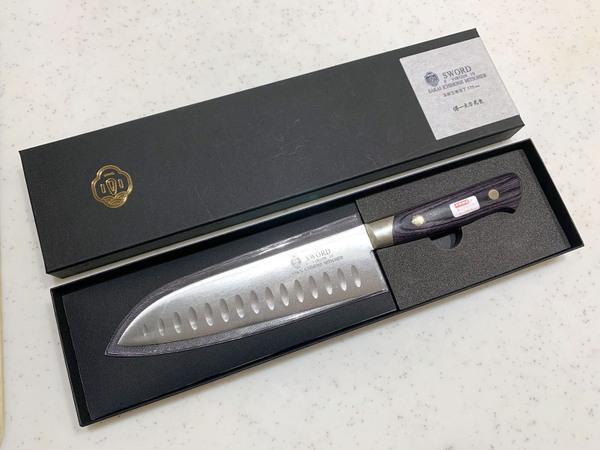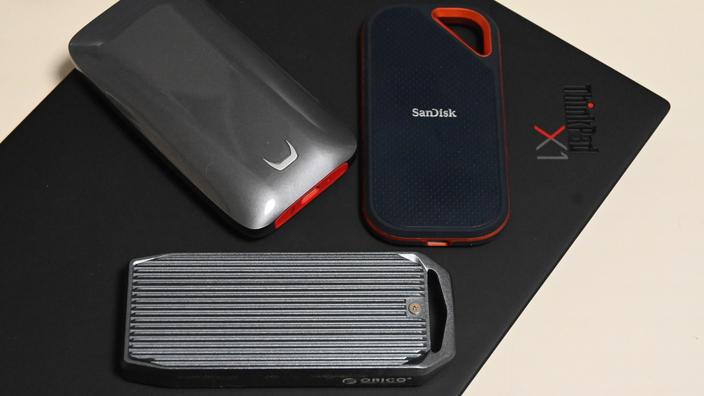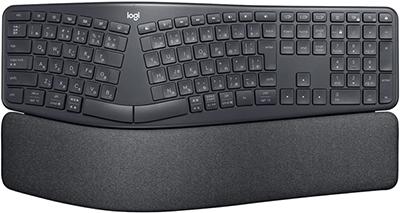I bought a slightly good Sakai kitchen knife that conveys the technology of Japanese sword production.
It is a Sakai kitchen knife famous for knives
I'm no longer old to exchange gifts with Kami -san and Christmas, but I'm giving some kind of waste of my hobbies.
After all, accessories such as piercings and necklaces, and clothes and shoes.Occasionally, I sometimes give home appliances like dryers and vacuum cleaners, but this is already a house equipment rather than a gift.
It was completely practical that I gave it to Christmas last year.It is a kitchen knife.
When I was looking at this on the net, I saw a story of a person who bought a good kitchen knife and thought it would be good.
The kitchen knives that I have been using for a long time are simply a simple sharpener, so the sharpness has fallen considerably.That's why I have an attachment, so if I get sharpened, it's a good idea to buy one good guy.
This is what I chose.It is a family kitchen knife "FV10 Tamakiga Sansoku Kitchen knife" by Mitsuhide Sakai.
I bought a good kitchen knife.The name of Sakai Ichiji Mitsuhide is cool!
Isn't Sakai Ichikami Mitsuhide like a famous sword and cool?Sakai is Sakai City, Osaka Prefecture, and is one of the main production areas of kitchen knives, along with Tsubame City, Sanjo City, Niigata Prefecture, Seki City, Gifu Prefecture.
The roots of the kitchen knife are Japanese swords
Making a kitchen knife in Japan is deeply involved in the production of Japanese swords.
There are five large schools, Yamato Den, Yamashiro Den, Bizen Den, Aishu Den, and Mino Den, and this is called Gokaden.The birthplace of each is Yamato (now Nara Prefecture), Yamashiro country (now southern Kyoto Prefecture), Bizen country (now south south of Okayama Prefecture), Sagami country (now Kanagawa Prefecture), and Mino Country (now Gifu (now Gifu)Southern prefecture).Many swordsmiths belonged and their status was very high.
It was in the Kamakura period that the culture of Japanese sword production was greatly blossomed.
The occurrence of the sword itself is much older, and in the Yayoi period, there is already a double -edged sword, and the Kojiki has been exterminated by the Kojiki Susano (Susanoo, Susanoo).There is a story that the sword (Kusanagi no Toshi) appeared.During the Kofun period, a sword with a single -edge like a Japanese sword was already made.
However, the sword up to that time is a straight sword with a straight blade, and it seems that the blade that was warped, which is a characteristic of Japanese swords, was in the late Heian period.
Bizen Nagatafune, which boasts the best production volume in Japan
In the Kamakura period, when samurai gained the power and struggled here and there, the performance and production of Japanese swords improved.It is said that about 80 % of Japanese swords, which are born with many masterpieces and swords, and are designated as existing national treasures, are from the Kamakura period.It's amazing, the Kamakura period.
After the Muromachi period from the Kamakura period, it is the Azuchi -Momoyama period.It is said that the sword before that was called the old sword, and the subsequent sword was called the new sword after the end of Keicho.One of the triggers that could be distinguished was Bizen Nagatafune (Nagafuna), who has heard of it.It is a super major brand based in Bizen, which boasts the number one production of the nationwide number one, and is currently in Nagafune, the current Seto City, Okayama Prefecture.
This Bizen Nagatafune is a brand that is said to have been the first Mitsutada in the middle of the Kamakura period, and its technology was inherited as Chokomitsu and Keiko, and Bizen Nagatafune and Hikari were popular in the North and South Dynasties in the early Muromachi period.Released a style called Biju -mae, which incorporates the characteristics of the biography.It seems to have become very popular among samurai.
Make money by exporting Japanese swords
The Muromachi period, which lasted about 240 years, began in the North and South Dynasty, where the South and North Dynasty was competed, but the Muromachi Shogunate 3rd Shogun Yoshimitsu Ashikaga was successful in the North -South Dynasty.The country is stable and a time is for a while.Until then, it's cool!It looks like a kan!looks strong!It is said that the popular long, wide large swords and wild swords hidden in the shadows, and the slender and elegant design reminiscent of the swords of the Kamakura period began to be touted.
If that happened, the demand for swords was likely to decrease, but at this time, Bizen Nagatafune, who succeeded in mass production of swords for the first time in Japan, began to make production instead of reducing production.Yoshimitsu Ashikaga began trade with Akira, and exported Japanese swords as Japanese specialty products.
What was made for exports was a low -quality low -rice product called "several hits", and everything was sold at a price of 10 times in light.It is Shogunate Uhauha.
Japanese sword is miniaturized
In the late Muromachi period, the battle began to occur again, starting with Onin's rebellion, and the world enters the Warring States period.In the past, I often fought in the equestrian state, but I started to fight down the horse, and the mainstream of Japanese swords was a small sword from a sword to a sword.At this time, a smaller wakizu was created in order to respond to indoor battles, and it became a style of large and small two -boxes often seen in historical drama.

As the demand for swords increases, Mino Country has also learned mass production technology.It seems that a lot of reasonable swords of mass -produced type were made along with Bizen Nagatafune.
In 1543, a gun was transmitted to Tanegashima.He began to make barrel and other manufacturing techniques for Japanese swords, and succeeded in domesticization only eight months later.And long -distance weapons on the battlefield move from bow and arrow to gun.
New sword born from the destruction of Bizen Nagatafune
The following Azuchi -Momoyama era.In this area, there are some confusing places for me who are not good at history, but it is easy to understand in the second half of the Warring States period.It is the era of Oda Nobunaga & Toyotomi Hideyoshi.
Later, in 1590 (the theory is powerful), a tremendous earthquake ran in the sword industry.With the flooding of the Yoshii River, which flows in the east of Okayama Prefecture, the Bizen Country and the current eastern Okayama prefecture, the Bizen Nagatafune school fell into a destruction.This stops Bizen's sword production.
Daimyo in various places has now called a swordsmith from Mino Country, a production area that can be mass -produced.And since the daimyo accompanied to move to another land by changing the country, Minoden spread rapidly nationwide.
And 1596 (Keicho's first year).From this time, the swordsmiths scattered in various places have created a free style that incorporates new technologies and unique designs, and has changed into a new style sword.It is the birth of a new sword.
Due to the development of logistics due to the unification of the world, the same quality steel has been obtained nationwide, and there is no regional difference in local iron compared to the unique steels in various places.
From Japanese sword production to various knife production
In the Edo period, the sword becomes a sub weapon or a samurai status symbol.Many clans had a financial difficulty due to the impact of great fire, famine, evil politics, and shifts, and in such places, samurai was no longer a new sword.
After that, he tried to dig up demand through martial arts encouragement, but it became like an artwork, so it did not lead to a significant recovery of sales, and manufacturing farmers such as nata, kitchen knives and household knives such as scissors and scissors.Some swordsmen have been forced to make a living.It is around this time that Japanese swords lead to various knife production.
At the end of the Tokugawa period, the world begins to flutter again and sword demand comes out, but it is temporary.The Japanese sword production is finally lost due to the abolished sword order of the Meiji era.
The characteristic of Sakai is a hitting knife
Japanese sword production technology that shifted to various knife production.In Sakai, it was said that a cigarette knife for cutting tobacco leaves was made during the Muromachi period, and after the gun was transmitted, guns were produced.
The current Sakai is one of the three largest production areas of knives, and its feature is a forged knife made by craftsmen by hitting steel.The kitchen knife has a double -edged blade with a blade and one -sided one -sided blade, and the hitting blade in Sakai is a single blade, and it is said to boast 90 % of the kitchen knives for professional cooks in Japan.
One blade is often used in high -performance Japanese kitchen knives such as kitchen knives and yayagi knives, and double -edges are almighty.Although the performance is inferior to one -edged, the ease of use is both blades, and most of the kitchen knives used in ordinary households are double -edged.
The material is steel or stainless steel, and the steel that draws the flow of the Japanese sword is sharp but easy to rust, and stainless steel is hard to rust, but it feels like losing in sharpness.
I made it a Sangoku kitchen knife for home use
Sakai Ichiji Mitsuhide's kitchen knives are broadly divided into Japanese kitchen knives, western knives, home kitchen knives, special kitchen knives, and Japanese cows.It is a versatile type Santoku kitchen knife.I was attracted to steel, but I didn't think I could maintain it properly, so the material was stainless.
Santoku kitchen knife for home use.The blade length is 175mm
There are even more types of stainless steel, and it is a place where you get lost again, but it is a steel material called V Gold 10.
I was wondering what kind of material it was, so I found out that it seemed to be a product of a company called Takefu Special Steel, and the composition composition was 1%carbon for iron, 15%chromium, 1%of molybdenum, and 0 vanadium..25%, cobalt 1.55%.It seems that the hardness is quite high because it contains a lot of carbon.
Stainless steel is chrome content 10.5%or more, carbon content 1.It's just 2%or less, so it's just stainless steel.The chromium content is high, so it may be more rust.Molybdenum, vanadium, and cobalt also seem to lead to strength and wear resistance.
The material of the blade is V Gold No. 10.With a dimple that makes it difficult to get the material
Tama -kai is the dent on the blade.Because air enters here, the resistance when cutting is reduced, and the ingredients can easily leave even after cutting.
The handle is made of wood.It will be damaged, so it seems better to avoid putting it in a dishwasher
The pattern is wooden, so it is not suitable for dishwasher.The blade may be missing.Very hard foods, such as frozen foods, are not allowed because they may spill blades.
Western white silver base
I think the base is a stainless steel, and it's Yoritakin.It's a bit fashionable.
It seems okay to do this blade
At the time of purchase, you can also ask for the work of "this blade".The craftsmen are able to sharpen thoroughly by hand, and the sharpness increases, but on the other hand, it is easier to spill blade.
The blade is not attached, but the sharpness is outstanding.It feels good that the tomatoes that tend to collapse are cut quickly
The ingredients are hard to stick to the blade.
The fish also runs out of spaspa
The "SWORD" of the logo is cool
If you do not attach this blade, there is no blade, and the sharpness is enough even in the default state.It is recommended that you use it once you get used to it and then attach it to your taste, so I didn't ask for this.In fact, there is no need for such a sharpness.
If you wish, you can use your name for free, and there is also a free sharpening service without expiration date.If the sharpness gets worse someday, I would like to sharpen the craftsman.I want a good whetstone.






![[July 6 and 7] DX realized by content cloud, advanced platform for business transformation](https://website-google-hk.oss-cn-hongkong.aliyuncs.com/drawing/article_results_9/2022/3/9/6bbafe438d78271513761788166cbf94_0.jpeg)

